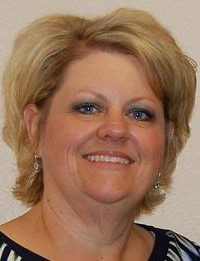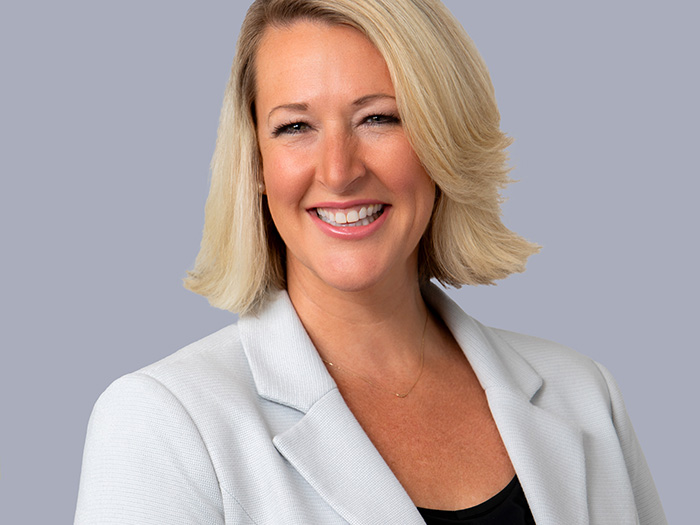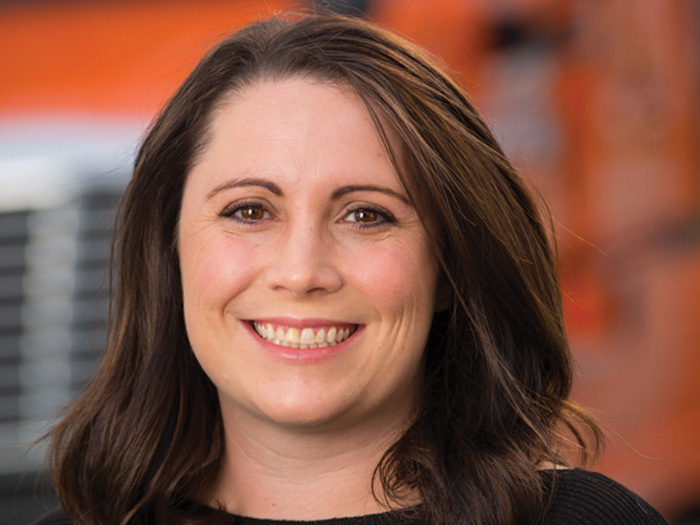Sponsored Content by CorVel
4 Ways This Claims Organization Is Battling Adjuster Turnover — and Winning

Adjuster turnover is a persistent and pernicious problem across the insurance industry. When claims professionals switch accounts, leave companies, or exit the sector altogether, it leaves their employers, policyholders and carriers scrambling to reconnect the dots.
Risk managers become frustrated with re-educating new adjusters about their losses, programs, and culture. They also lose faith in their claim service provider if claim processing becomes slow and disorganized in the aftermath of turnover.
“The claims professional is really an extension of the customer. In liability claims, we are an extension of their organization. We are their brand, and we are very much integrated into their workflows. So when an adjuster leaves, it disrupts their business as much as ours,” said Dave Brown, Senior Vice President & Chief Claims Officer, CorVel Corporation.
Claims organizations also must absorb the expense of recruiting and training new hires. Other adjusters have to take on extra work and quickly familiarize themselves with new cases when there is an open desk. Providing this type of desk coverage can impact the overall quality of their work and impact morale.
When the value of a claims service provider lies in its ability to resolve claims, adjusters are critical in delivering that value — which is why retention strategy is a top-of-mind issue for risk managers.
“When we talk to customers, brokers, and carriers, everyone has the same question: What are you doing to control turnover?” said Michele Tucker, Vice President, CorVel.
Here’s what claims organizations can do to combat the top four drivers of adjuster turnover:
1. To Prevent Burnout, Make Maximum Case Limits Mandatory

Dave Brown, Senior Vice President & Chief Claims Officer, CorVel Corporation
It’s no secret that adjusters struggle with high caseloads. To keep workload under control, claims organizations have to do more than encourage adjusters to speak up and ask for help. Caseloads have to be measured, tracked and monitored by management.
“We strive to create a work environment that provides the time and resources to support optimal results. For example, we set caseload maximums that are on the lower end of the industry. Although seasonality may cause those workloads to rise, we have strict policies around how much and for how long that can happen,” Brown said. “Maintaining reasonable workloads is critical to professional retention. It’s a business performance fundamental that management watches closely. Caseload standards must be supported by metrics and management systems that provide actionable information to the managers who make day-to-day decisions on workload assignments.”
A transparent tracking system helps to keep organizations accountable.
“We recently released an interactive claim inventory dashboard which allows total visibility into the assignment trends, claim durations, and open file counts, among other items. All are presented in displays that speed decisions on how to distribute new assignments. It clearly shows variations from standards that may need to be addressed. Everyone from the supervisor to the C-suite now has the same clarity regarding the status of staffing capacity,” Brown said.
2. Create Internal Opportunities to Keep Talent In-House

Michele Tucker, Vice President, CorVel Corporation
In any industry, some turnover will result from employees looking to move up or expand their experience in a new role. Acknowledging and supporting employees’ ambitions helps create a collaborative environment in which adjusters and their employer can work together on a long-term plan allowing the pursuit of career goals without causing undue disruption.
“We’ve adopted supervisor training programs that equip adjusters with the skills needed to advance, but we also create individualized development plans,” Tucker said. “Beginning as early as the recruitment process through interviewing and onboarding, we’re looking at candidates’ career aspirations and making sure we understand their goals and expectations so we can build plans. Having a plan in place means we can facilitate a smooth transition.”
It can be a delicate balancing act, though, to support employee growth while ensuring continuity of service for customers. To maintain consistency, there have to be guidelines set in place.
“We address this through a staffing that only moves people for promotions,” Brown said. “Once someone is assigned to an account, they can’t move to another account simply because it assists with office workload balancing. This policy is making a positive difference in employee and customer satisfaction.”
3. Highlight the Positive Impact of Adjusters’ Work to Boost Engagement
There is a public perception that the adjuster’s job is to root out fraud; that they are always looking for ways to deny or minimize the value of claims. If adjusters feel like they are expected to be the bad guy, it can be demoralizing and lead to dissatisfaction.
“In reality, adjusters can have a huge positive impact through their interactions with customers,” Tucker said. “With severe losses, you’re engaging with people at perhaps their lowest point. Adjusting the claim is not just about dollars and cents — it’s an opportunity to help people along their road to recovery.”
One of Brown’s most memorable experiences, for example, was when a young parts delivery driver was catastrophically injured. Our claims professional worked tirelessly to ensure she got the very best care possible. She helped to coordinate a team of medical professionals and all of the resources needed to help with her recovery. Less than a year later, the injured worker had made a far better recovery than anyone could have imagined.
“Our professional was thrilled to make a meaningful difference, at a time when all hope could have been lost. We recognized her great work, and the insurance carrier also awarded her and others working on the case with their top honor for professionalism. That is the heart we strive to bring to our services, and the caliber of professional that we want to thrive within CorVel,“ Brown said.
“We are constantly recognizing and praising good work like this so our people realize what a difference they can make.”
4. Update Systems to Rival the Enjoyment of Mobile Apps
The tools that a claim professional uses make a huge difference in their time management and overall job satisfaction. Many claims systems employ dated approaches that are clunky and do not facilitate an efficient workflow.
“Adjusters are constantly in and out of files and they are often juggling various service providers based on a client’s service instructions. Conventional systems have alerts and reminders, but they can become so frequent that they become a noisy distraction that keeps the professional from being proactive,” Brown said.
Investing in technology that streamlines workflow and leverages the coded information available from CorVel’s integrated managed care services makes a significant difference in efficiency and easing the claims professional’s frustration with unnecessary work.
“Creating a better user experience that people truly enjoy is central to our professional retention strategy. Design is as important as function. We are striving to create an experience that helps draw and keep top talent in our claims organization. We are rapidly reaching the point where the majority of our workforce has been steeped in the use of mobile apps for the rest of their time outside of work. We are driven to deliver an equally great user experience with our system. For example, we recently unveiled a claim file summary screen, which captures all of the information needed to understand a claim’s position and progress towards closure. However, it is much more than a summary screen — its user-friendly interface delivers direct access to every system function and reduces the time needed to update the claim,” Brown said.
The claims summary screen is the most recent enhancement to CorVel’s claims management platform, CareMC Edge. The Edge revolutionizes claims processing by curating the vast amount of coded data streaming from CorVel’s integrated claims and managed care services to help claims professionals stay on top of their caseload. It prioritizes work that must be attended to, while offering unprecedented flexibility in how that work is organized for completion.
“Today we’re so overwhelmed with information and systems and data. People are looking for simplicity, and that’s what we’re trying to create,” Tucker said.
Company Culture Matters
No workload policy, development program, or technology investment can be effective for battling adjuster turnover without a company culture that truly values the work of adjusters. Continually reinforcing that culture requires buy-in from leadership — something not always easy to attain.
“Starting with our CEO through the entire leadership team, there is a focus on retention as an integral aspect of our business strategy. Our leadership is very dedicated to doing everything possible to keep the right people on the job, so that we can fulfill our goal of making a significant difference to the clients we serve,” Tucker said.
That dedication is demonstrated through the transparency with which CorVel discusses employee retention. Account-specific reports detail for customers the direct impact that any adjuster turnover has on their business. By putting this analysis front and center, the claims organization is effectively putting its money where its mouth is.
“What gets measured gets done, and we’re putting enough focus on this that it’s having an effect,” Brown said. “We’re holding on to our talent by creating a better work environment, and that produces better results for everyone.”
To learn more about CorVel’s claim management services, visit https://www.corvel.com.
This article was produced by the R&I Brand Studio, a unit of the advertising department of Risk & Insurance, in collaboration with CorVel. The editorial staff of Risk & Insurance had no role in its preparation.










